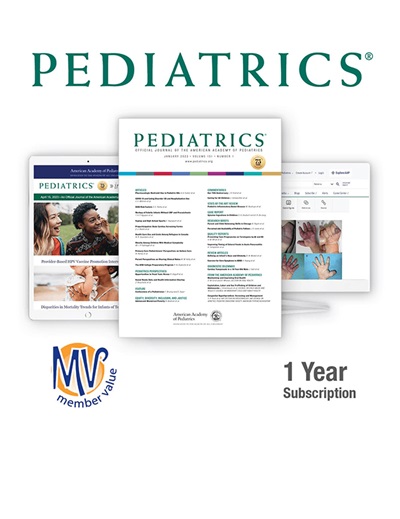Disparities During Family-Centered Rounds for Families Using Languages Other Than English.
IF 6.4
2区 医学
Q1 PEDIATRICS
引用次数: 0
Abstract
BACKGROUND/OBJECTIVE Patient- and family-centered rounds (PFCR) have become a pediatric standard of care. However, rounds experiences of families using languages other than English (LOE)-particularly languages other than English or Spanish (LOES; eg, Arabic)-receive less focus. We aimed to identify differences in PFCR communication and engagement by language. METHODS We analyzed postintervention data from a 21-center structured PFCR study, assessing communication practices, quality, and family and nurse engagement during PFCR. Logistic regression adjusted by site compared PFCR between families using (1) LOE vs English, (2) Spanish vs English, and (3) LOES vs English. RESULTS Among 3051 PFCR encounters, 348 (11.4%) involved LOE (Spanish = 260; LOES = 85). Interpretation was not used in 7.2%, 5.8%, and 9.4% of encounters using LOE, Spanish, and LOES, respectively. PFCR in the following groups had lower adjusted odds (adjusted odds ratio [95% CI]) for the following domains: (1) LOE vs English: including providing verbal patient summaries (0.66 [0.46-0.95]), explaining diagnoses and differentials (0.62 [0.44-0.88]), family engagement (0.34 [0.20-0.57]), nursing inclusion (0.75 [0.60-0.93]), and nursing engagement (0.69 [0.52-0.90]). (2) Spanish vs English: diagnoses/differentials being explained (0.56 [0.37-0.85]), family engagement (0.35 [0.18-0.67]), nursing inclusion (0.77 [0.59-1.00]), and nursing engagement (0.68 [0.52-0.89]). (3) LOES vs English: families sharing concerns (0.66 [0.47-0.93]), family engagement (0.30 [0.16-0.54]), and nursing inclusion (0.74 [0.55-0.99]). CONCLUSION Even after implementing a PFCR intervention, families using LOE-especially LOES-experienced significant disparities in communication and engagement. Future approaches to improving PFCR should emphasize language access and promote nurse and family engagement for families using LOE, particularly LOES.使用英语以外语言的家庭在以家庭为中心的查房中的差异。
背景/目的以患者和家庭为中心的查房(PFCR)已经成为儿科护理标准。然而,使用英语以外的语言(LOE)的家庭的经验-特别是英语或西班牙语以外的语言(LOES;例如,阿拉伯语)——得到较少的关注。我们的目的是通过语言来确定PFCR交流和参与的差异。方法:我们分析了21个中心结构化PFCR研究的干预后数据,评估了PFCR期间的沟通实践、质量以及家庭和护士的参与度。通过地点调整的逻辑回归比较了家庭之间的PFCR,使用(1)LOES vs英语,(2)西班牙语vs英语,(3)LOES vs英语。结果在3051例PFCR接触中,348例(11.4%)涉及love(西班牙语= 260;爱= 85)。在使用LOE、西班牙语和LOES的会面中,分别有7.2%、5.8%和9.4%没有使用口译。以下组的PFCR在以下领域具有较低的调整优势(调整优势比[95% CI]):(1) LOE vs英语:包括提供口头患者总结(0.66[0.46-0.95]),解释诊断和差异(0.62[0.44-0.88]),家庭参与(0.34[0.20-0.57]),护理纳入(0.75[0.60-0.93])和护理参与(0.69[0.52-0.90])。(2)西班牙语与英语:诊断/差异被解释(0.56[0.37-0.85]),家庭参与(0.35[0.18-0.67]),护理融入(0.77[0.59-1.00]),护理参与(0.68[0.52-0.89])。(3)爱与英语:家庭分享关心(0.66[0.47-0.93]),家庭参与(0.30[0.16-0.54]),护理包容(0.74[0.55-0.99])。结论:即使在实施了PFCR干预后,使用爱的家庭——尤其是爱的家庭——在沟通和参与方面仍存在显著差异。未来改善PFCR的方法应该强调语言获取,并促进护士和家庭参与使用爱的家庭,特别是爱的家庭。
本文章由计算机程序翻译,如有差异,请以英文原文为准。
求助全文
约1分钟内获得全文
求助全文
来源期刊

Pediatrics
医学-小儿科
CiteScore
12.80
自引率
5.00%
发文量
791
审稿时长
2-3 weeks
期刊介绍:
The Pediatrics® journal is the official flagship journal of the American Academy of Pediatrics (AAP). It is widely cited in the field of pediatric medicine and is recognized as the leading journal in the field.
The journal publishes original research and evidence-based articles, which provide authoritative information to help readers stay up-to-date with the latest developments in pediatric medicine. The content is peer-reviewed and undergoes rigorous evaluation to ensure its quality and reliability.
Pediatrics also serves as a valuable resource for conducting new research studies and supporting education and training activities in the field of pediatrics. It aims to enhance the quality of pediatric outpatient and inpatient care by disseminating valuable knowledge and insights.
As of 2023, Pediatrics has an impressive Journal Impact Factor (IF) Score of 8.0. The IF is a measure of a journal's influence and importance in the scientific community, with higher scores indicating a greater impact. This score reflects the significance and reach of the research published in Pediatrics, further establishing its prominence in the field of pediatric medicine.
 求助内容:
求助内容: 应助结果提醒方式:
应助结果提醒方式:


